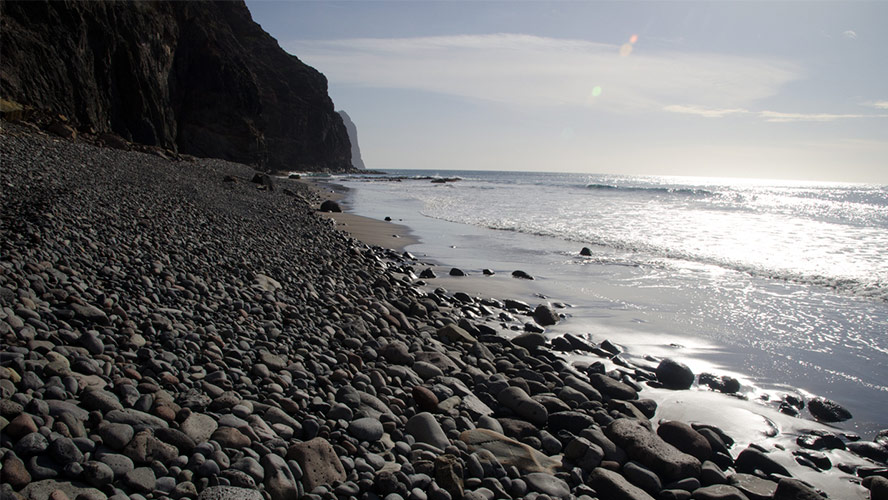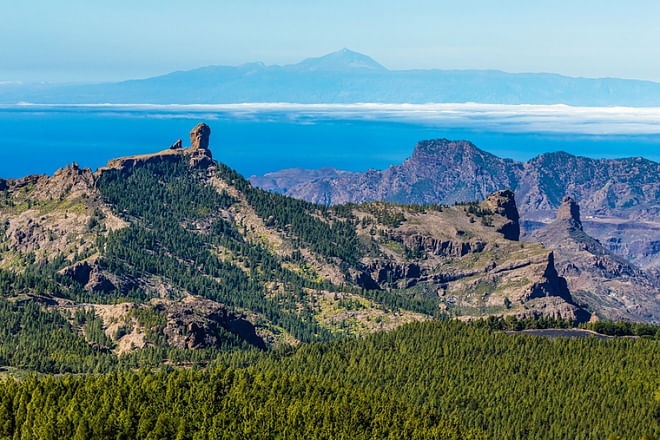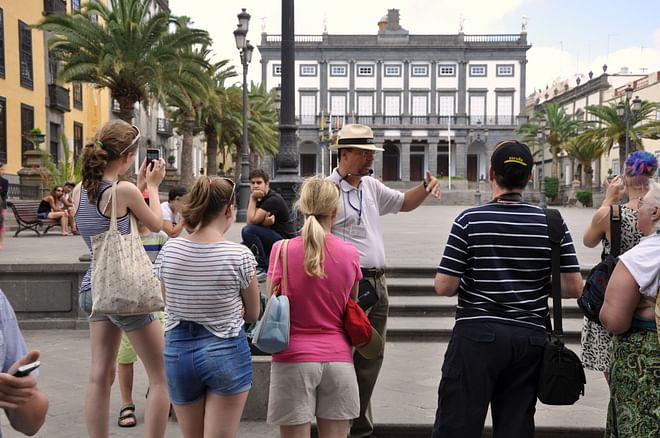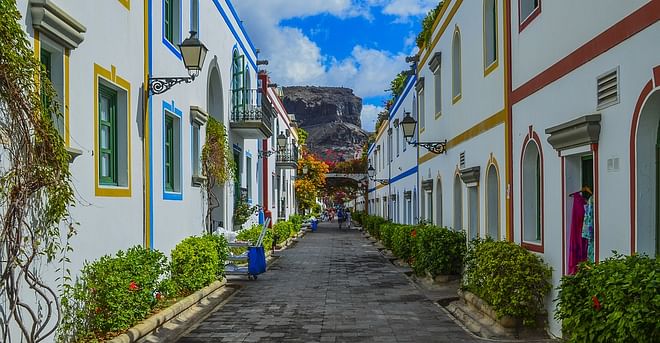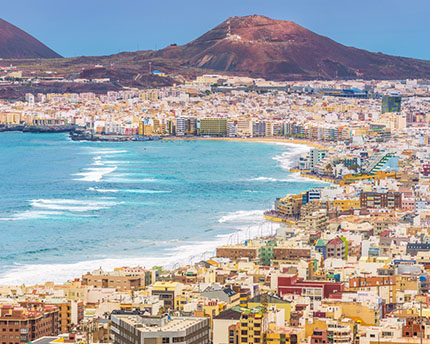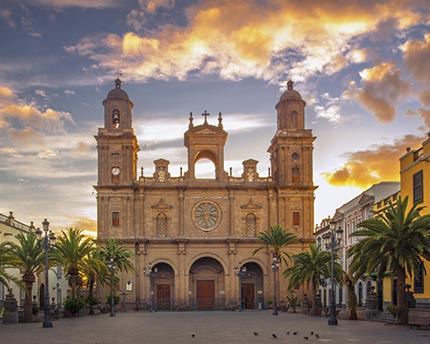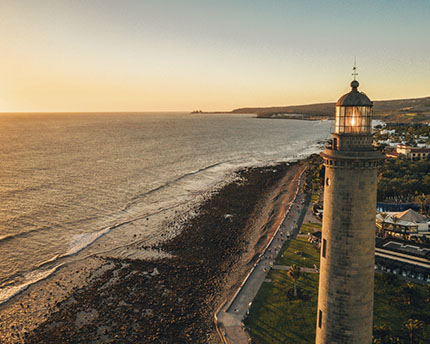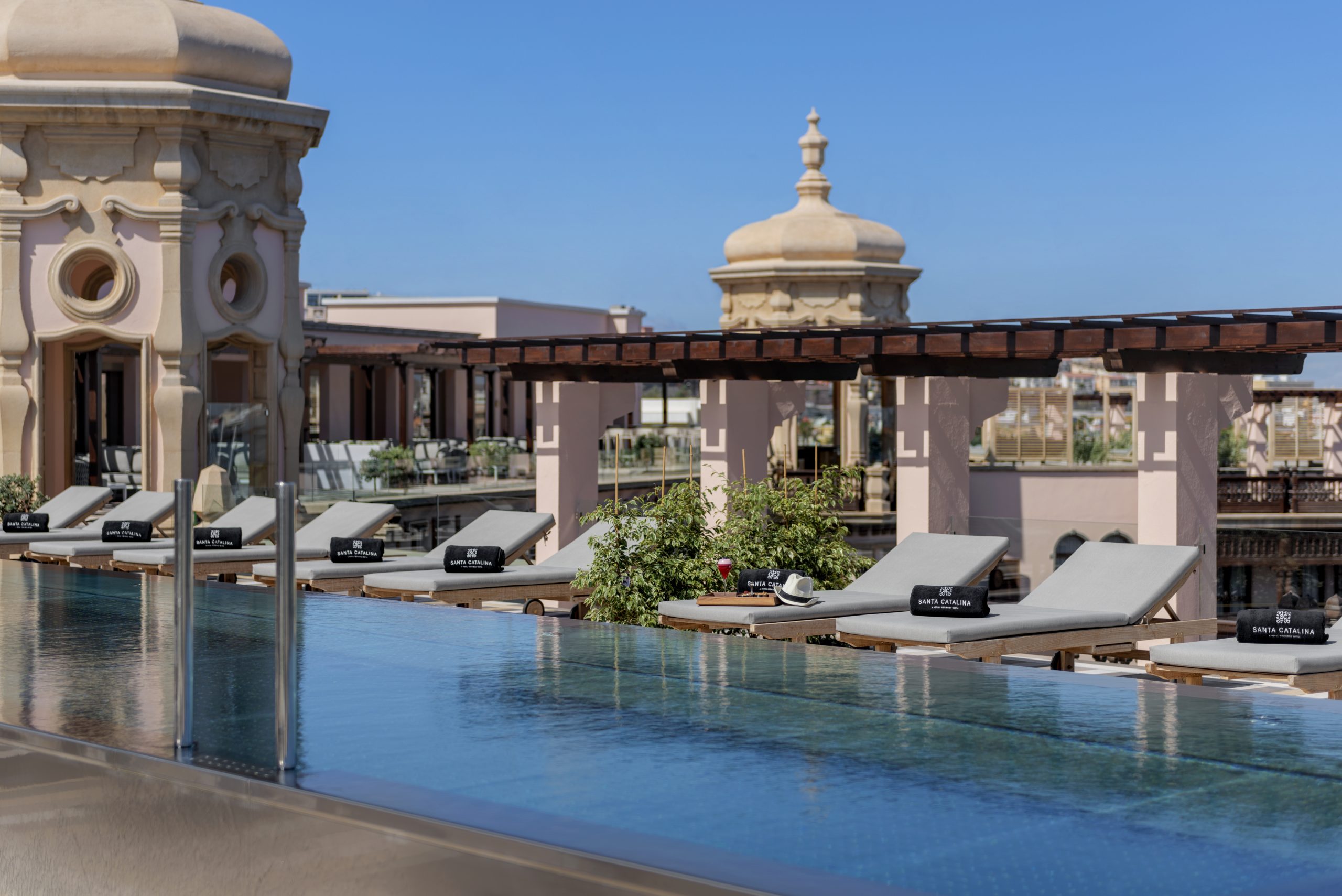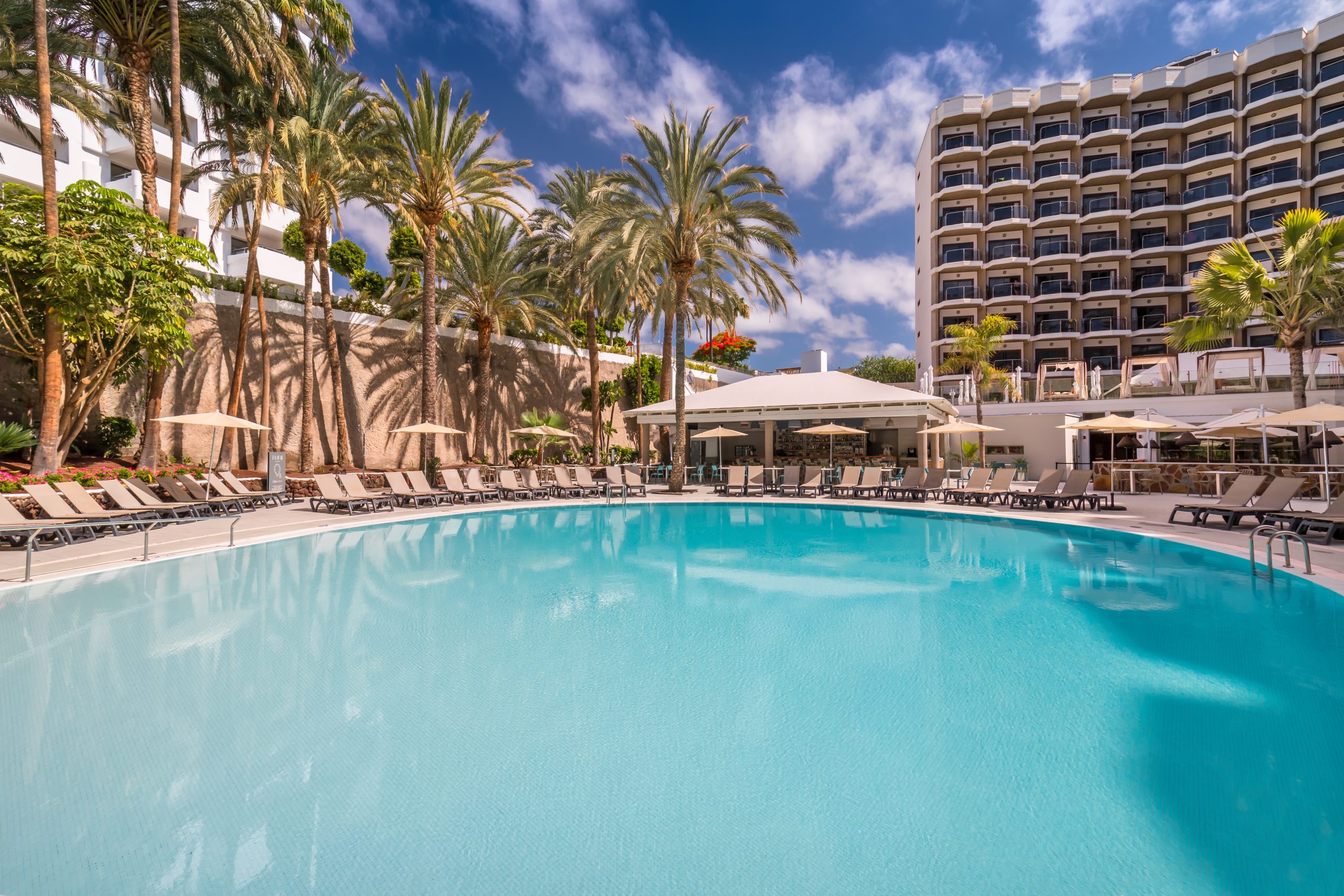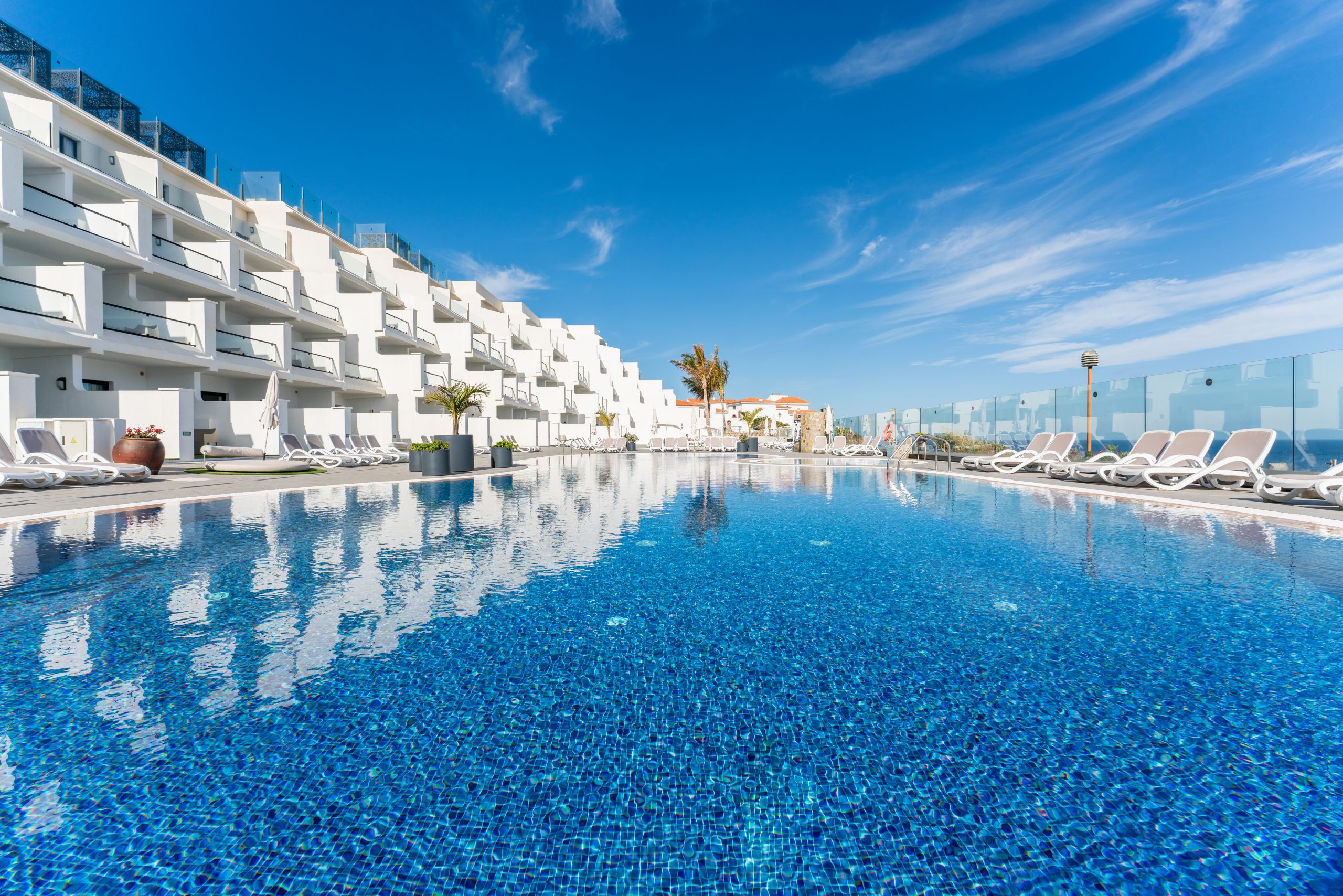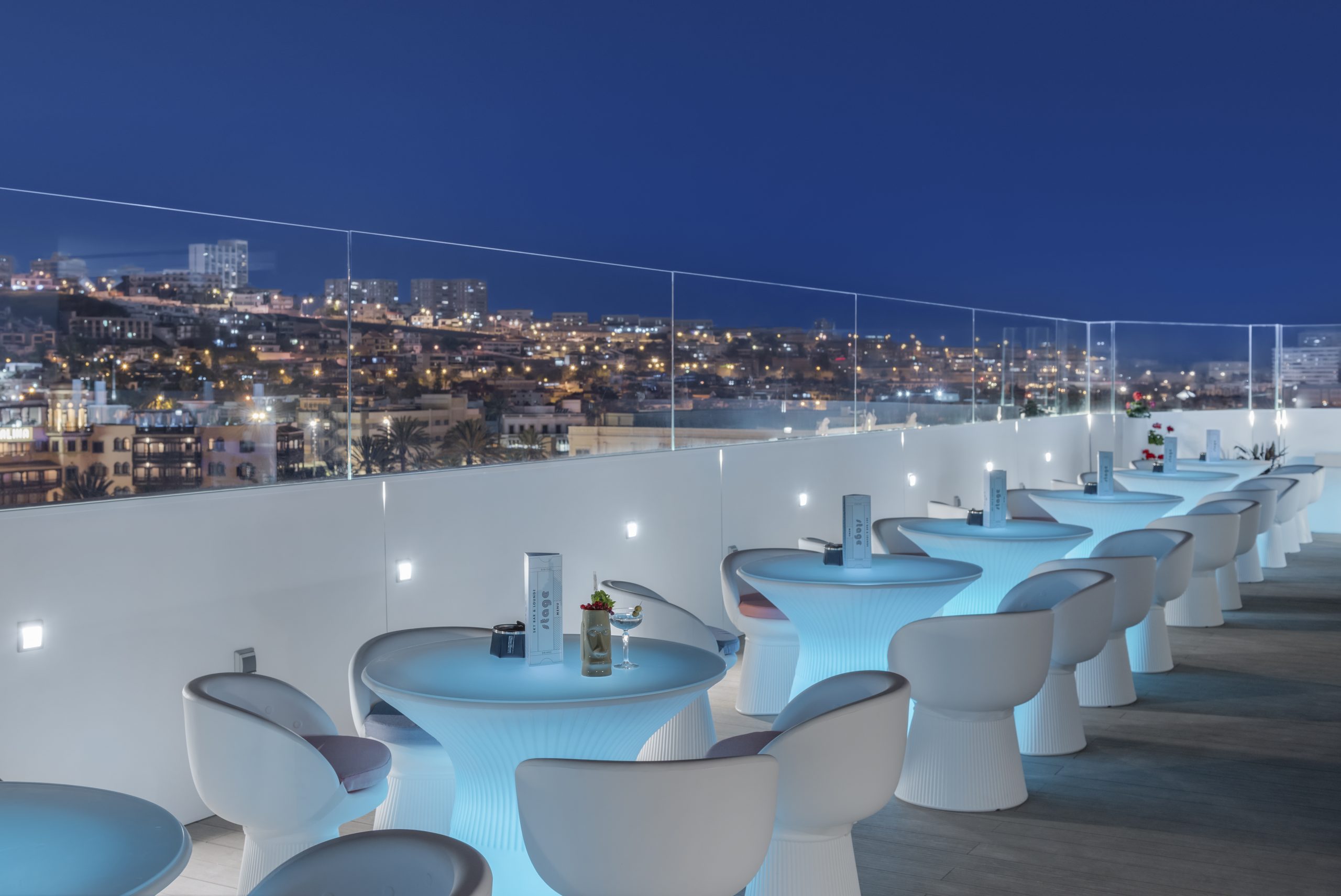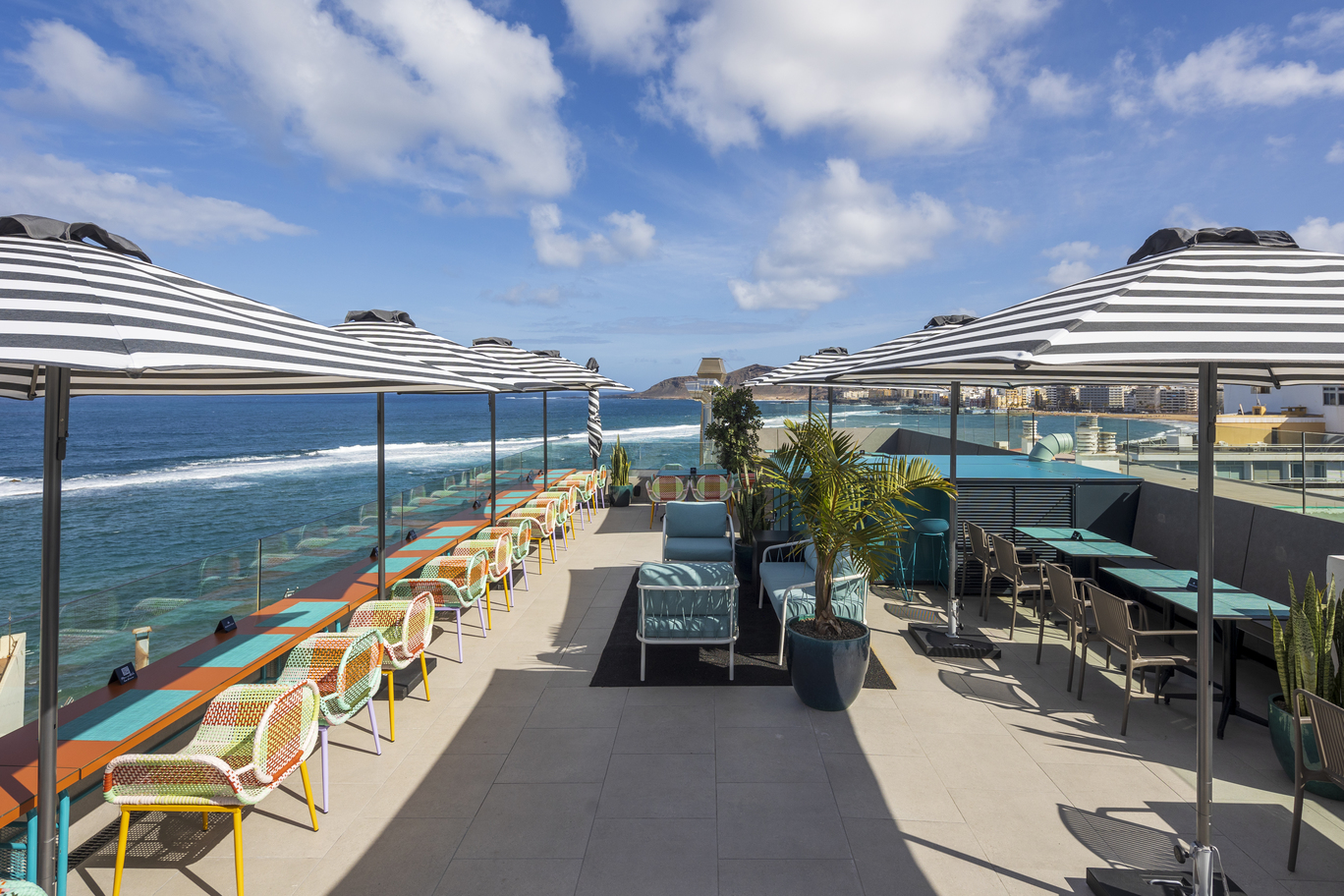Each year the island of Gran Canaria attracts over four million visitors eager to enjoy its striking nature, explore its over 60 kilometres of beaches, do sports and savour its delicious gastronomy made using local produce. In this corner of the Canary Islands, alongside the islands of Tenerife, Lanzarote and Fuerteventura, all kinds of visitors are welcome, from couples to groups of friends and families, with everyone finding activities suitable for their tastes and interests.
Gran Canaria is without a doubt an excellent option all year round, thanks to its warm climate, which means you can make the most of all the seasons as if on one permanent holiday.
Read on to find out about the places and activities that we think cannot be missed in Gran Canaria due to their historical and natural importance and the enjoyment they offer.
ESSENTIAL NATURAL AREAS
The variety of natural places in Gran Canaria means that within a small area you will find geographical landmarks as varied as a large rock formation, dunes that resemble a desert, a crater and cliffs. Exploring the island is like taking an island geography and history lesson round every corner. Some of the must-visit places related to nature that you cannot miss in Gran Canaria include the following.
Related experiences
Roque Nublo, a place of worship
Roque Nublo is Gran Canaria’s most recognisable rock formation. Standing at a height of 80 metres and rising 1,813 metres above sea level, the rock was formed by one of the volcanic eruptions that forged the archipelago millions of years ago. The most unusual thing about Roque Nublo is its link to a sacred place of worship for ancient indigenous people. The rock is one of the island’s must-visit places.
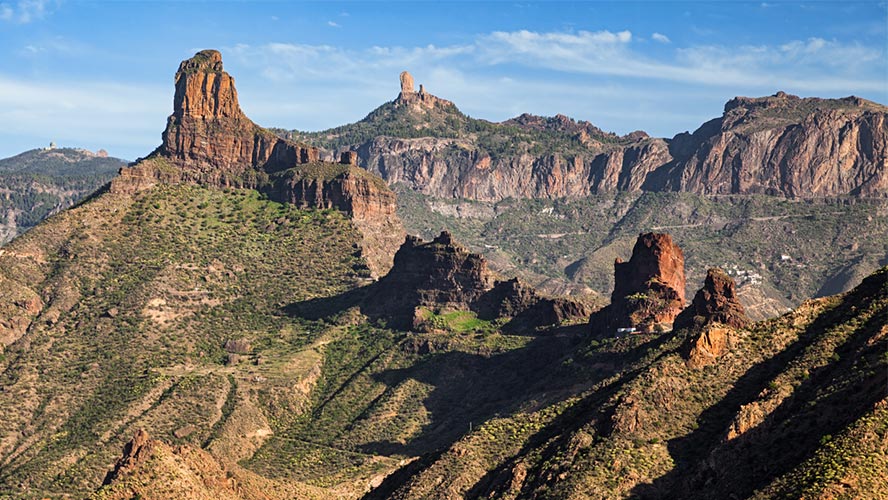
Maspalomas dunes: a small desert
If you don’t have a photo of Maspalomas dunes, you haven’t been to Gran Canaria. This miniature Sahara desert is one of the most striking landscapes that must be visited on the island. Walk through the dunes, enjoy the panoramic views and round things up with a swim in the blue waters of the Atlantic.
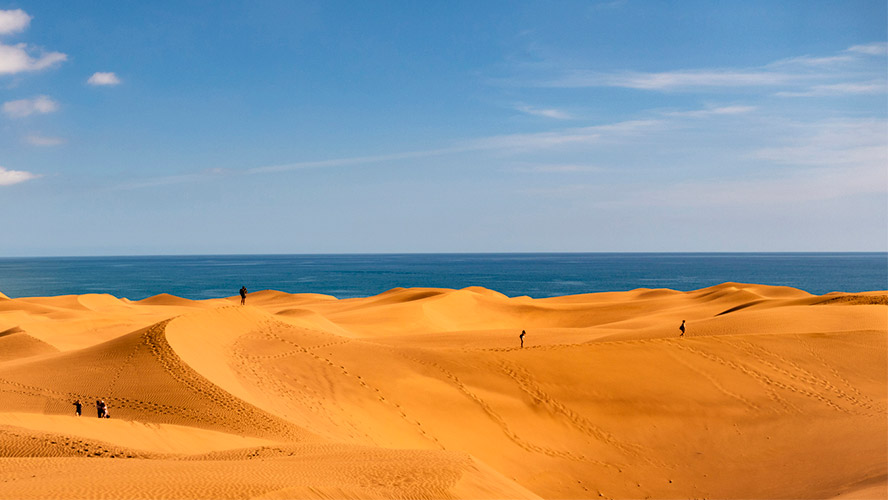
Tamadaba Natural Park: inland and on the coast
Tamadaba Natural Park is a natural area that extends from the interior of Gran Canaria all the way to the ocean, featuring a Canary Island pine forest, sea cliffs and ravines. Explore this park spanning 7,500 hectares along one of its trails and don’t miss the beauty that unfolds before visitors at observatories such as the Balcón viewpoint.
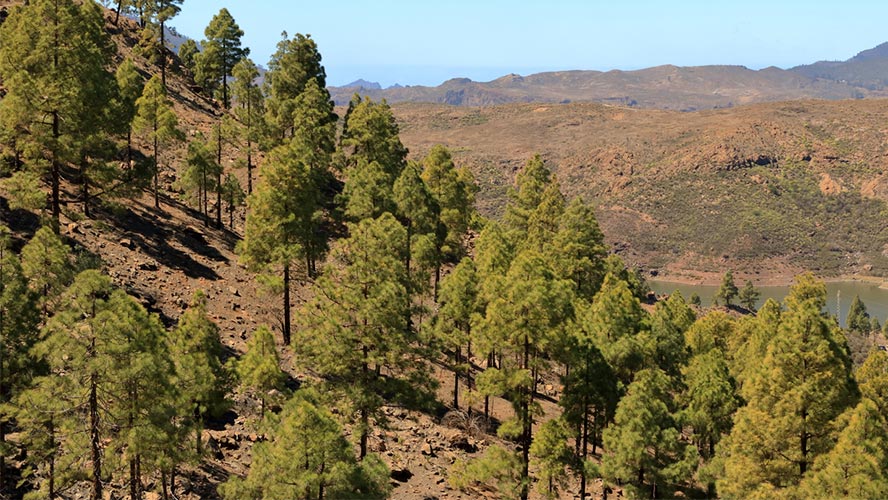
Guayadeque Ravine Natural Monument
The Guayadeque ravine is not one of the best known places in Gran Canaria but nevertheless comes highly recommended. This ravine with steep slopes winds its way from the interior to the coastline for 15 kilometres. Along the way you will discover part of Gran Canaria’s indigenous past, cave houses, endemic vegetation (over 80 native species) and even hotels and restaurants.
It also boasts dozens of hiking routes that allow you to discover its most hidden secrets, so put on your hiking boots and get walking!
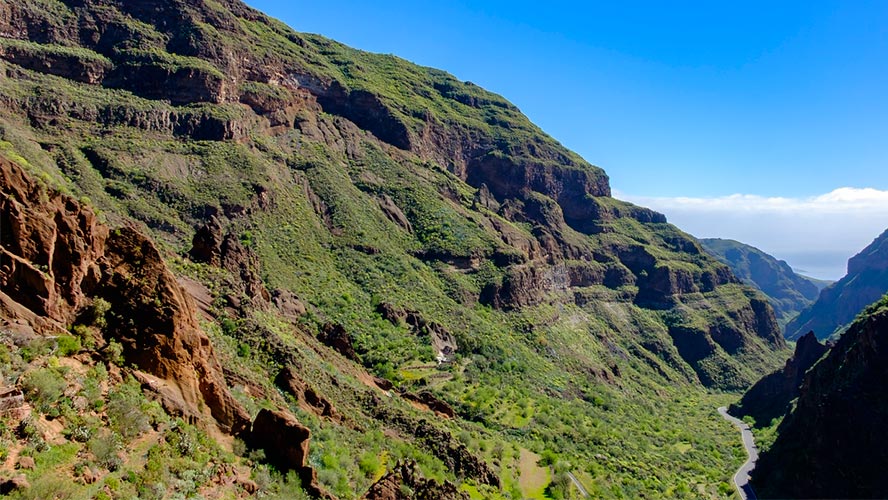
Cenobio de Valerón
Situated on Gallego mountain, over 300 different-sized cavities form Cenobio de Valerón, which was created by Canarian indigenous people to store their harvests, protecting them from animals, storms and the light-fingered. The site was declared a Cultural Interest Site in 1974 and is one of the most unusual places that you cannot miss in the Canary Islands.
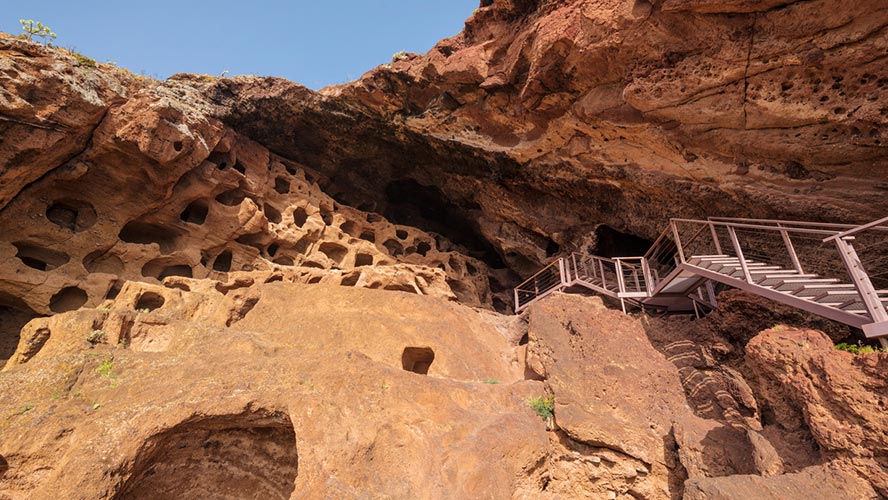
Bandama caldera
TheBandama caldera is one of the most astonishing and unusual places on the planet, formed after an eruption and the subsequent collapse of a volcano over its magma chamber. In 1994 the area was given protected status as a National Monument. The large crater is practically circular in shape with a circumference measuring three kilometres and a depth of 200 metres. We recommend climbing up to the caldera’s highest point, Bandama, as the views from up high are stunning.
Incidentally, its name comes from Daniel Van Damme, the Belgian who purchased the caldera in order to plant vineyards.
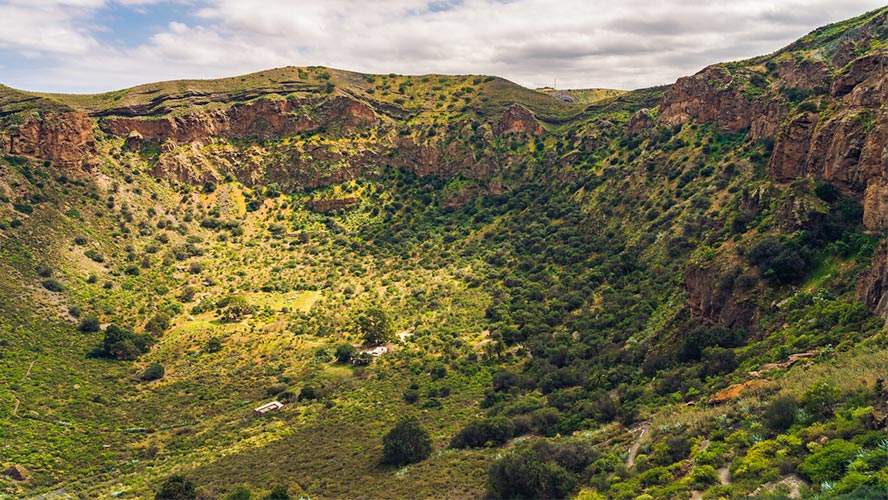
Gáldar Painted Cave: testimony to indigenous peoples
The Gáldar Painted Caveis one of Gran Canaria’s archaeological jewels and living testimony to the indigenous people’s use of caves and lava tubes. Some 60 dwellings have been found in the acropolis of Gáldar, which could have housed over 200 people, in addition to other cavities that were used as burial chambers and meeting places. In the case of the Painted Cave, discovered in the nineteenth century, corpses and household items were found inside it. After large-scale adjustments, the Cueva Pintada Museum and Archaeological Park was set up. Guided tours are now available.
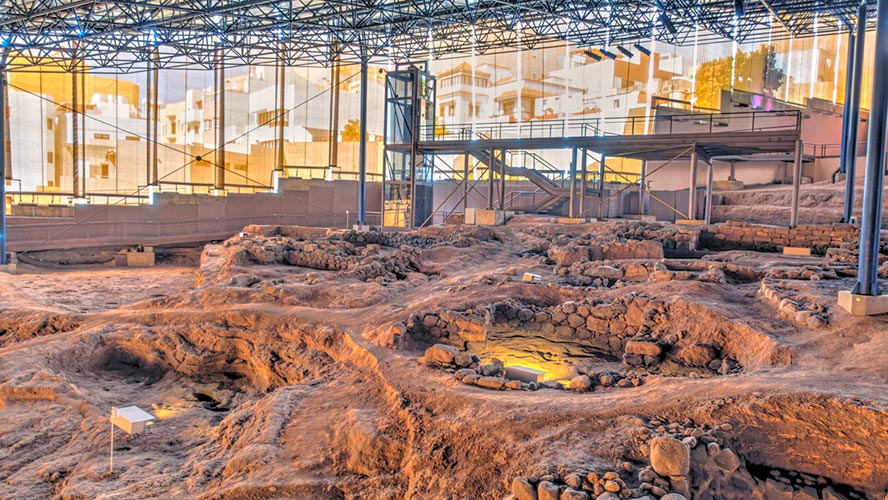
VISIT THE MOST BEAUTIFUL TOWNS AND VILLAGES IN GRAN CANARIA
In Gran Canaria cities sit alongside towns and villages with different characteristics depending on their location. Explore the capital and lose yourself in the most beautiful towns and villages in the interior or on the coast, which are sometimes situated in unlikely places where many foreigners decide to stay for good.
Las Palmas de Gran Canaria: the island’s proud capital
The capital, Las Palmas de Gran Canaria, proudly lays claim to being the most cosmopolitan place on the island, a dynamic city where you can enjoy picturesque spots, excellent restaurants and beautiful beaches.
Some must-visit places in Las Palmas include La Luz castle, the Holy Cathedral-Basilica of Santa Ana (known as the cathedral of the Canary Islands) and Vegueta market. Culture lovers should make note of the Casa de Colón, an institution where the history of the Canary Islands and its relationship with the Discovery is studied, as well as the Alfredo Kraus auditorium, a modern venue that hosts major international events.
Time should also be set aside for some shopping on Calle Mayor de Triana, which is not only a shopping street but also a charming thoroughfare, and a visit to Las Canteras beach, the most important urban beach in the Canary Islands.
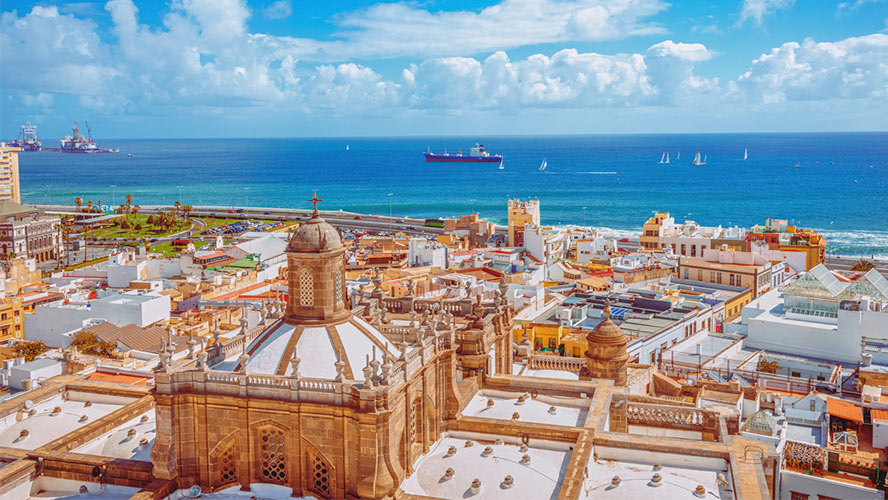
Teror and its Virgen del Pino
Just 20 kilometres from the capital is Teror, a town devoted to the Virgen del Pino (Virgin of the Pine), which receives thousands of pilgrims each year. Walking along its streets lined with colourful houses with pretty wooden balconies dating from the fifteenth-century is a true delight for visitors. If you are familiar with its name, you shouldn’t be surprised, as its reputation precedes it due to the bottled water Aguas de Teror.
Visits to town to discover the basilica of Nuestra Señora del Pino, the Cistercian monastery, the Episcopal palace and its squares and fountains should be combined with an excursion to Doramas Natural Park, which features the impressive Azuaje and Moya ravines.
And don’t forget that if your visit falls on a Sunday, a market takes place in the morning, where you can pick up handicrafts and fresh local produce.
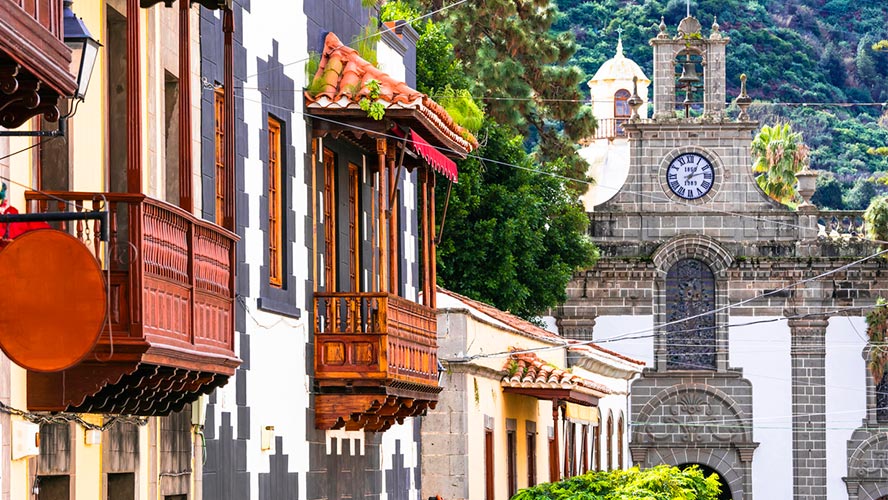
Agaete, a picturesque town
The charm of the town of Agaete, just 30 kilometres from Las Palmas, lies not only in its historical quarter made up of white houses, or in its interesting past, traces of which can be seen in Maipés cemetery, but also in the welcoming locals, who always offer friendly conversation and a smile to visitors.
On a stroll through Agaete you can discover places such as La Concepción church, the La Rama Ethnographic Museum, and the charming Huerto de las Flores garden. But we also recommend leaving the town centre for a swim in the natural pools of Salinas de Agaete, which even has a bar and a wide range of facilities.
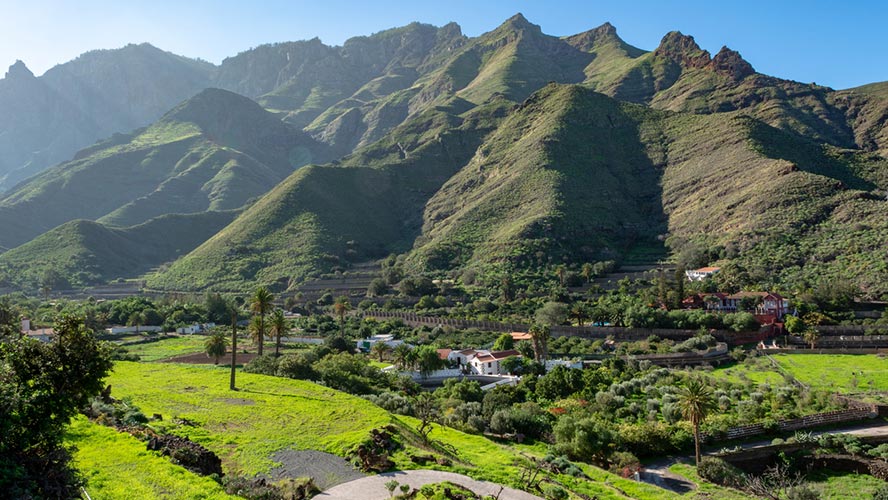
Arguineguín, the loveliest town
This traditional fishing town, which belongs to the municipality of Mogán, is situated in the south of Gran Canaria. Arguineguín, regarded as one of the loveliest towns on the island, offers travellers a complete experience with a charming historical quarter, a port where you can watch seafarers or take a boat trip, a colourful market and beautiful beaches.
Although it is hard to fit in everything on a day trip, be sure to set aside time to sample the traditional cuisine served in its restaurants.
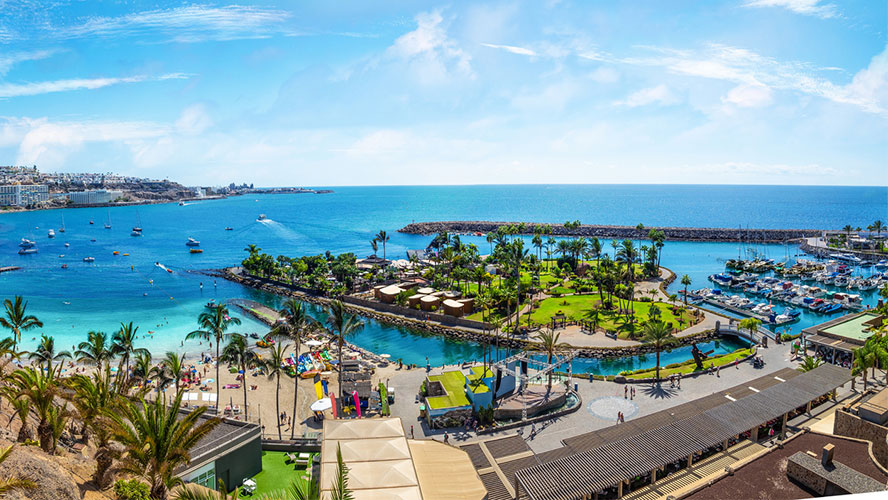
Puerto de Mogán, the most photogenic
Puerto de Mogán is situated in the municipality of Mogán and somewhere your camera will not be able to resist. The old white fisherman houses covered in bougainvillea, the colourful shutters, the small canals that link the marina and the fishing port… Everything is a true delight.
Soak up the tradition by strolling along the quayside while the fishermen repair their nets, go whale watching or sit on a terrace on the seaside promenade and do absolutely nothing, because sometimes contemplation is the best activity in places as beautiful as this.
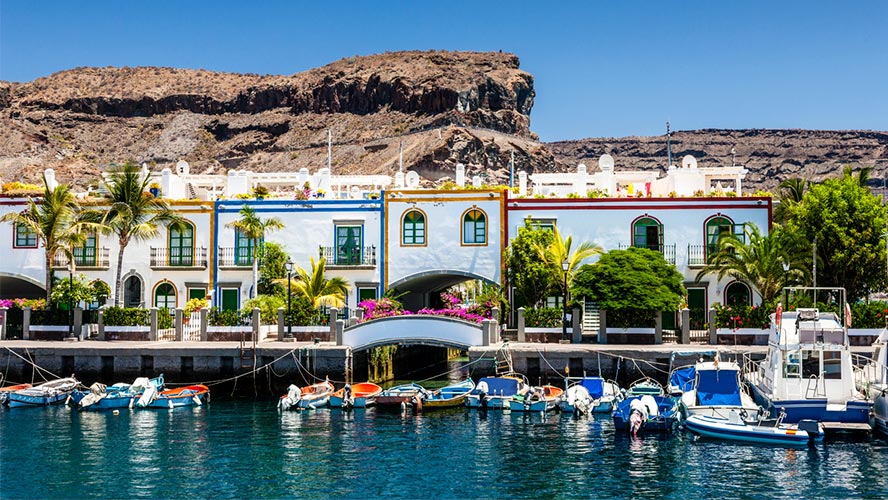
Arucas, the rum capital
If you had to choose just two reasons to visit Arucas, they would be a visit to San Juan Bautista church and a stroll through the birthplace of Arehucas rum, the most famous rum in the Canary Islands. The former, also known as Arucas cathedral, is surprising in terms of its architecture and size for a town of just 35,000 inhabitants. Although it was built on the site of an old hermitage, the neo-Gothic building that stands today, completed in 1977, is in no way similar to the previous construction.
Our second reason for visiting Arucas is quite different but just as valid, since the town was also the birthplace of the oldest rum cellar in Europe, linked undoubtedly to sugarcane cultivation in this part of Gran Canaria.
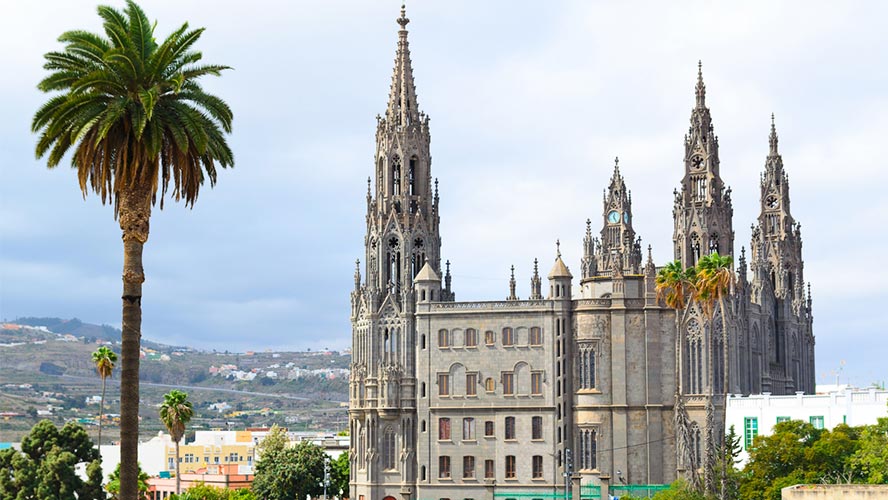
Telde, past and present
If you think the town of Telde is steeped in history, wait until you visit the surrounding area. Although the order in which you visit is up to you, be sure to walk through the San Juan neighbourhood, where the town was founded, featuring the beautiful church of San Juan, and the San Francisco neighbourhood, whose narrow streets hold surprises around every corner. And before enjoying everything its 10 kilometres of coastline have to offer, and the image of boats bobbing along in the water, make sure you visit astonishing sites such as Cendro, Tara, El Baladero, Tufia and the Montaña de las Cuatro Puertas (caves which were once inhabited by indigenous people).
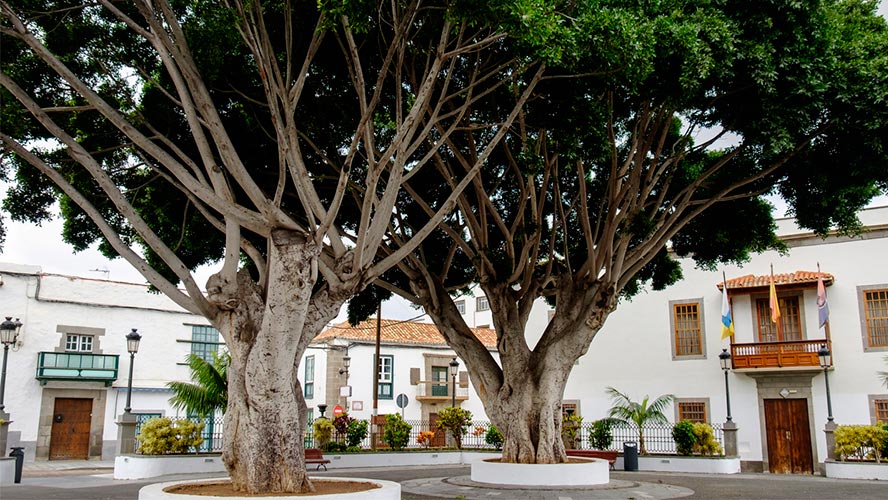
DISCOVER THE BEST BEACHES IN GRAN CANARIA
In Gran Canaria, the range of beaches on offer is almost as extensive as its towns and villages and natural areas. Each day, you can decide what takes your fancy, whether it is an urban beach with a full range of services, an unspoilt hard-to-access cove, or an artificial beach where you can spend the day in what feels like the Caribbean. And, if you stay for a few days, you can experience it all. For now, here are some of the best beaches that you can visit in Gran Canaria.
Anfi del Mar, a mini Caribbean
We can’t say for sure that Anfi del Mar is the most spectacular beach in Gran Canaria, because the island boasts many excellent beaches, but what is for certain is that it has the most unusual history. To explore its uniqueness we must go back to the 1990s when a Norwegian businessman decided that it would be interesting to recreate the look and feel of the Caribbean in the area. To do so, he had thousands of tons of sand shipped from the Bahamas and built the beach of his dreams. Add in some palm trees and the turquoise water and the image couldn’t be more ‘Caribbean’. The beach is perfect for families due to its calm water as well as anyone looking to spend the day sprawled out on a sun lounger under the shade of a palm tree with intermittent views of the bars.
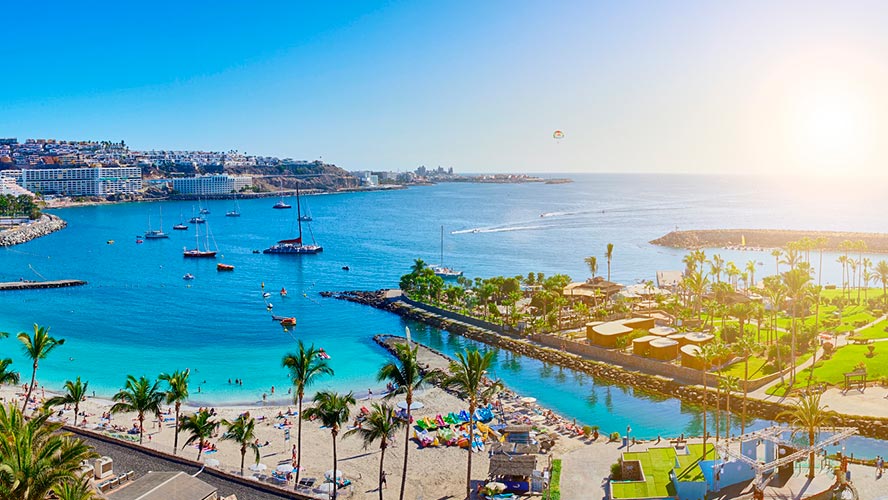
To visit this paradise you must head to the municipality of Mogán, between the towns of Puerto Rico and Arguineguín.
Amadores beach: a family day out
Sheltered from currents due to its shell shape, Amadores beach offers visitors a calm place to spend the day in peace and quiet, go snorkelling and do other water sports. Spanning almost 500 metres of golden sand, many families are often attracted by the tranquil pool-like waters. Nearby, there are a large number of restaurants, bazaars, and different types of entertainment, making it an ideal location to visit at any time of the year.
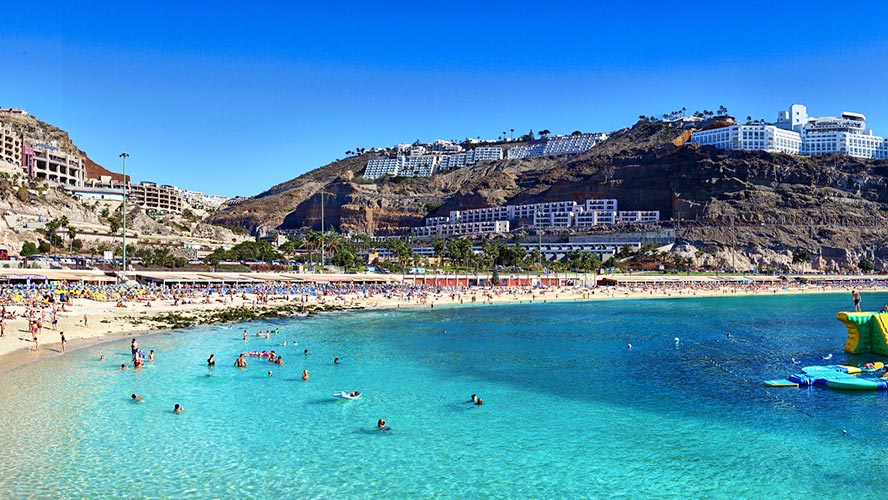
Playa del Inglés, something for everyone
Located in the south of Gran Canaria, Playa del Inglés is one of the most touristy beaches on the island. This is because the beach, which spans a length of three kilometres, has numerous plus points, such as its location, between the tourist resort of Playa del Inglés and Punta de Maspalomas, which makes it easy to reach, and services including beach bars, showers, toilets and sun lounger hire. The calm water and the option of doing sports also make it perfect for families with children.
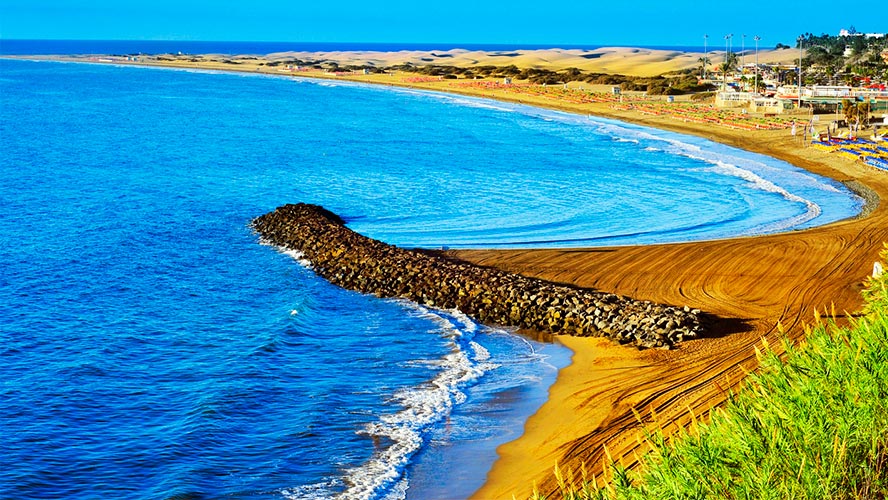
Las Canteras beach: the capital’s haven
Las Canteras beach is situated in Las Palmas de Gran Canaria, the island’s capital, but that doesn’t mean that it isn’t a fantastic place to spend the day and a beautiful spot. One of the great benefits of the beach is its location right in the historical quarter of the city, which means you can visit to stroll along its two-kilometre shore or sit in a hammock facing the sea whenever you fancy. It also has special access for people with reduced mobility and there is a wide range of restaurants in the surrounding area. Without a doubt, it is one of Gran Canaria’s must-visit places.
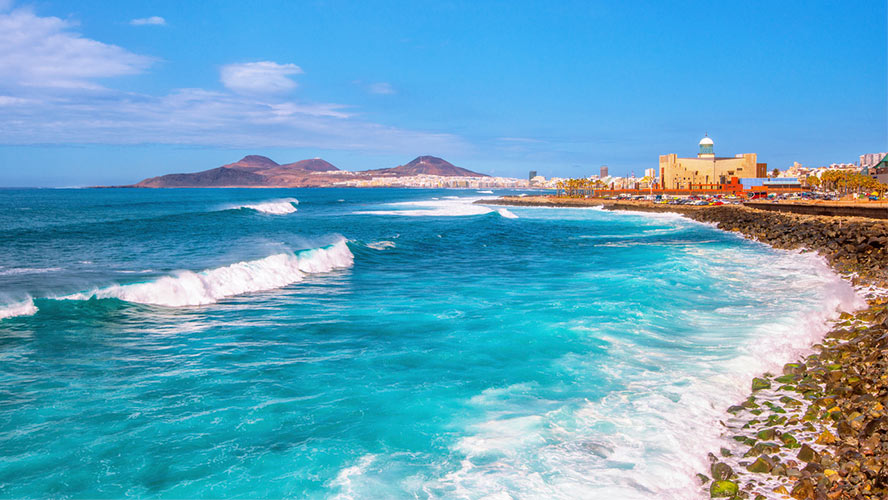
Las Meloneras beach: always lively
In the municipality of San Bartolomé is Las Meloneras beach, which is 500 metres long and has good services for beachgoers. Its golden sand and easy access mean it is frequented by families and people who prefer to have everything close at hand, such as a seaside promenade for walking, restaurants, ice cream parlours, souvenir shops and even spas.
In the surrounding area there are also various places worth a visit, including Maspalomas lighthouse, which is located at one end of the beach, the Punta Mujeres archaeological site, and the Maspalomas Dunes Special Nature Reserve, where you can enjoy a small-scale desert experience.
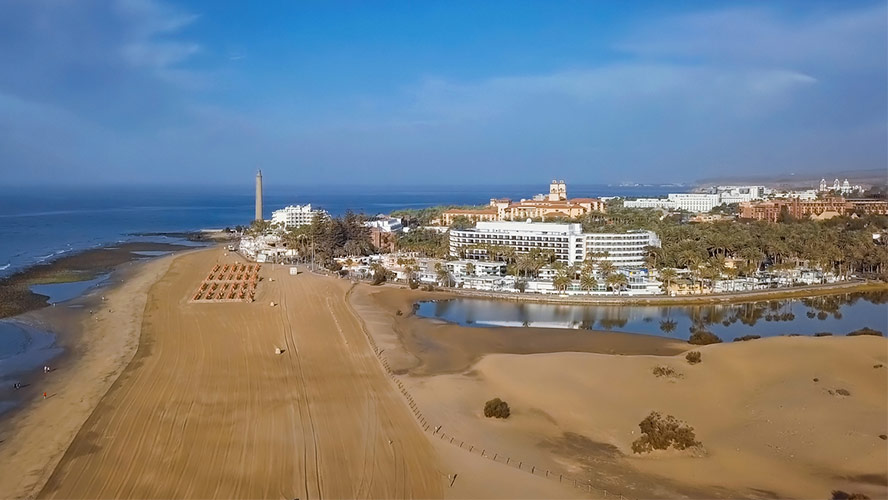
Güi Güi beach: the hardest to reach
In the west of the island, in La Aldea de San Nicolás, is Güi Güi or Güigüi beach, one of the few remaining unspoilt beaches in Gran Canaria, due to the fact that accessing it is not suitable for everyone. To get there you must leave your car in the village of Tasartico and walk along dirt tracks for about five kilometres (five there and five on the way back). Is it worth the hike you ask? Yes, and very much so, although if you are not keen on the steep incline, you can also get there by boat.
Once there you will find a near-deserted cove (bring water and a snack) with large pebbles where nudism is permitted.
